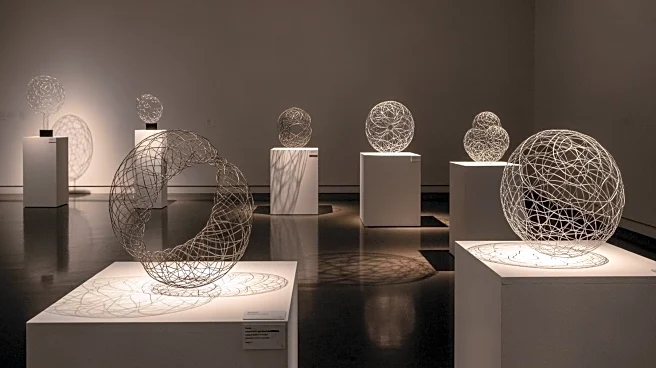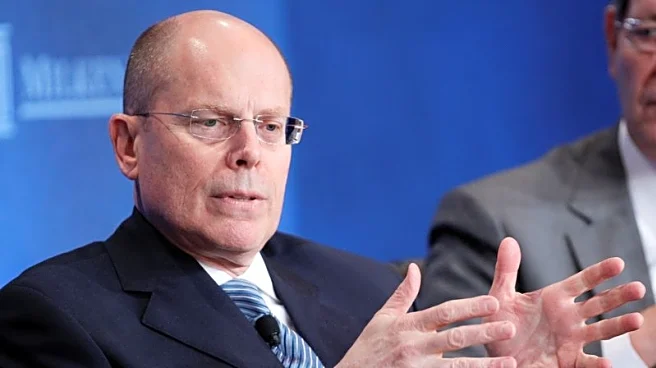What's Happening?
The Museum of Modern Art (MoMA) in New York is currently showcasing the first posthumous retrospective of Japanese American artist Ruth Asawa, renowned for her delicate, woven wire sculptures. This exhibition
follows a successful run at the San Francisco Museum of Modern Art, where Asawa's work attracted significant attention. The retrospective features 398 objects, making it the largest exhibition dedicated to a woman artist at MoMA. Asawa's signature looped-wire sculptures, inspired by basketry techniques learned in Mexico, are displayed alongside her works in other mediums such as wood, clay, bronze, and folded paper. The exhibition also includes archival material about her public commissions, highlighting her impact on the Bay Area's cityscape. Asawa's artistic journey began at Black Mountain College, where she studied under influential figures like Josef Albers and Buckminster Fuller, setting the foundation for her diverse and interconnected practice.
Why It's Important?
Ruth Asawa's retrospective at MoMA is significant as it brings overdue recognition to her contributions to the art world, particularly her innovative wire sculptures. The exhibition not only celebrates her artistic achievements but also addresses the historical oversight of her work, which was often dismissed as mere craft. Asawa's art has gained increased appreciation and market value in recent years, reflecting a broader reevaluation of her legacy. This retrospective serves as a platform to introduce her work to new audiences, potentially influencing contemporary art discourse and inspiring future generations of artists. Additionally, it highlights the importance of diversity and representation in the art world, showcasing the work of a Japanese American artist who overcame significant challenges during her lifetime.
What's Next?
The retrospective is set to tour internationally, with scheduled exhibitions at the Guggenheim Museum Bilbao and Fondation Beyeler in Switzerland. This global tour will further elevate Asawa's profile and expand her influence beyond the U.S. art scene. As her work continues to gain recognition, it may inspire increased interest in her techniques and themes, potentially leading to new artistic explorations and collaborations. The exhibition's success could also encourage museums to reevaluate and showcase other underrepresented artists, contributing to a more inclusive and diverse art world.
Beyond the Headlines
Ruth Asawa's retrospective not only celebrates her artistic achievements but also sheds light on her personal history and advocacy for arts education. Her experiences as a Japanese American during World War II and her dedication to community engagement through public art projects add layers of cultural and historical significance to her work. The exhibition prompts discussions on the intersection of art, identity, and social justice, encouraging viewers to consider the broader implications of her legacy. Asawa's story exemplifies resilience and creativity, offering valuable lessons on the power of art to transcend boundaries and foster understanding.












